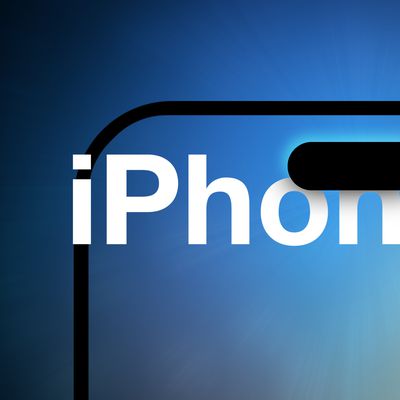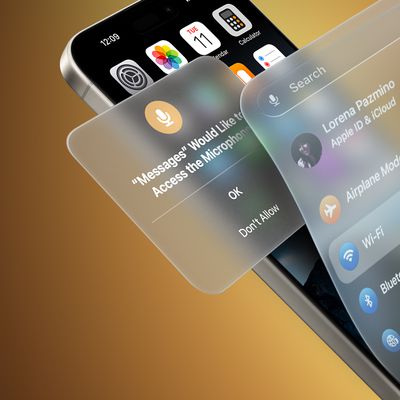Microsoft Releases Office for Mac Update With Full Apple Silicon Support in Excel
Microsoft has released a new version of its Office for Mac productivity suite that includes an updated Excel app with 100% native support for Apple silicon machines.

According to the release notes accompanying version 16.57, Excel will now run natively on Macs powered by Apple's M1-series processors without having to use the Rosetta 2 translation layer, which means anyone using a Mac with an M1, M1 Pro, or M1 Max processor can expect better performance and energy efficiency when working with Excel spreadsheets, particularly those that make use of the Power Query function.
Excel is fully supported on devices with Apple Silicon CPUs: Power Query in Excel for Mac is now natively supported on Apple Silicon processors. If you previously used Rosetta emulator to run Excel, you may now disable it and run Excel natively on your devices.
The latest update applies to Office 365, Office 2019 for Mac, Office LTSC 2021 for Mac, and Office 2021 for Mac, which are available as a one-time purchase from a retail store or through a volume licensing agreement. Users can get the new version from Microsoft AutoUpdate (MAU). To use Microsoft AutoUpdate, start an Office application, such as Word or Excel, and then choose Help -> Check for Updates.
Apple built its Rosetta 2 translation software so that Macs can run x86-64 code that's written for Intel Macs. In contrast to the original Rosetta – the version that allowed PowerPC apps to run on Intel-based Macs – code isn't interpreted in real-time. Instead, the Rosetta 2 translation process happens entirely on first launch, though there is a slight performance hit as the initial x86–64 translation of instructions takes place.
Apple says Rosetta 2 is a temporary solution for developers to make their existing Intel-based programs to run on Arm-based Macs, meaning they will eventually need to create native apps for Apple Silicon machines. Notably, Apple ended support for the original Rosetta three years after its release.
Popular Stories
While the iPhone 17 Pro and iPhone 17 Pro Max are not expected to launch until September, there are already plenty of rumors about the devices.
Below, we recap key changes rumored for the iPhone 17 Pro models as of May 2025:
Aluminum frame: iPhone 17 Pro models are rumored to have an aluminum frame, whereas the iPhone 15 Pro and iPhone 16 Pro models have a titanium frame, and the iPhone X ...
With the design overhaul that's coming this year, Apple plans to rename all of its operating systems, reports Bloomberg. Going forward, iOS, iPadOS, macOS, tvOS, watchOS, and visionOS will be identified by year, rather than by version number. We're not going to be getting iOS 19, we're getting iOS 26.
Subscribe to the MacRumors YouTube channel for more videos.
iOS 26 will be accompanied by...
Sony today provided a closer look at the iPhone rigs used to shoot the upcoming post-apocalyptic British horror movie "28 Years Later" (via IGN).
With a budget of $75 million, Danny Boyle's 28 Years Later will become the first major blockbuster movie to be shot on iPhone. 28 Years Later is the sequel to "28 Days Later" (2002) and "28 Weeks Later" (2007), which depict the aftermath of a...
Apple's iPhone 17 lineup will include four iPhones, and two of those are going to get all-new display sizes. There's the iPhone 17 Air, which we've heard about several times, but the standard iPhone 17 is also going to have a different display size.
We've heard a bit about the updated size before, but with most rumors focusing on the iPhone 17 Air, it's easy to forget. Display analyst Ross...
The next major version of macOS, now dubbed "macOS 26," is rumored to drop support for several older Intel-based Mac models currently compatible with macOS Sequoia.
According to individuals familiar with the matter cited by AppleInsider, the following Macs will not be supported by the next version of macOS:
MacBook Pro (2018)
iMac (2019)
iMac Pro (2017)
Mac mini (2018)
MacB...
With the next-generation version of iOS and other 2025 software updates, Apple is planning to change its numbering scheme. Rather than iOS 19, which would logically follow iOS 18, Apple is instead going to call the update iOS 26. Apple plans to use 26 across all of its platforms (the number representing the upcoming year), which will presumably be less confusing than having iOS 19, macOS 16,...
With iOS 26, macOS 26, tvOS 26, and watchOS 26, Apple is planning to debut a new design that's been described as taking inspiration from visionOS, the newest operating system. With WWDC coming up soon, we thought we'd take a closer look at visionOS and some of the design details that Apple might adopt based on current rumors and leaked information.
1. Translucency
Inside Apple, the iOS 26...
![]()





















